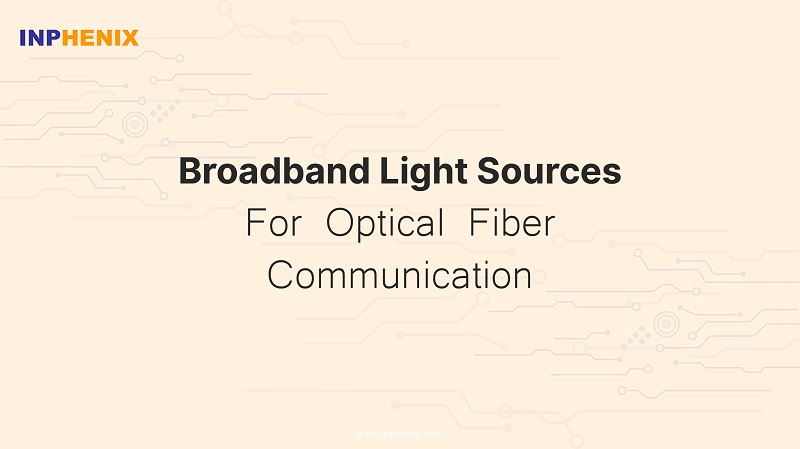
A broadband light source (BLS), as opposed to the monochromatic light source, generates light throughout a wide range of wavelengths. These light sources rely on the increased spontaneous emission of diode-pumped erbium-doped fibers. Broadband light sources are particularly useful since they emit a wide variety of light wavelengths.
The tungsten-halogen lamp, which is normally driven by a stable DC power supply, is the most popular broadband light source used for near-IR spectroscopy. This source has a long life and provides high energy in the near-infrared, where halogen works to return tungsten vapor back to the filament. Broadband light sources are frequently replaced by lasers, which produce a coherent and almost monochromatic output.
In this blog, we will look at the major aspects of optical fiber communication and how are broadband light sources useful for optical fiber communication.

Optical fiber communication, as the name implies, is a form of broadband connection that transmits and receives data or signals using optical fibers. It often uses glass or plastic cables, which address the problems of traditional copper cables’ poor speed and limited distance bandwidth carrying capability. Voice, video, and telemetry may all be transferred over local area networks or great distances using this kind of communication.
These broadband light sources are typically semiconductor laser diodes or laser diodes in most systems. Although other aspects are identical to other broadband connections, its high-speed capabilities are what sets fiber optics broadband apart from its competitors.
As previously said, fast connectivity is always preferable over slow-speed connections for trouble-free internet use, which is obviously given by optical fiber communication. Here are a few reasons why optical fiber should be preferred over other forms of Broadband light sources:
Fiber-optic networks are critical telecommunications infrastructure for global broadband networks. Wide bandwidth signal transmission with minimal latency is a critical need in different applications. In the coming years, they could play significant roles in many industries.
According to several estimates, the fiber optic market compound annual growth rate might grow approximately 8.0 percent by 2025, meaning that more sectors would be interested in the solutions given by this technology.
With the capacity to give speed rates close to 1GBps, fiber optic broadband is the future of internet access. Fiber optics services are used in companies and even homes in nations such as the United States of America. If you want to learn more about broadband light source and their applications, check our blog: Definition & Applications of Broadband Light Source.
Inphenix is a prominent manufacturer of light sources and lasers in the United States. Our well-known products include O band amplifiers, distributed feedback lasers (DFBs), swept-source lasers, VCSELs, and broadband light sources. Check our other blogs to learn more about our products.
